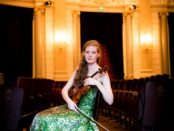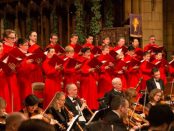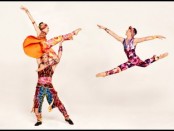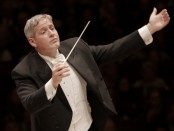Lady5 @ Savion Glover’s BaRoQUE’BLaK TaP CaFé
Whatever Glover discussed in the opening – about identity and wearing masks – may have been relevant, but the program could be seen simply as a revue. A wide variety of recorded music was played. The first music sounded like something you’d hear in a French café, and in fact was recorded by a group called French Café Ensemble. Other musical styles included classical (Bach), jazz, pop, salsa, Trinidadian, hip hop, and more, performed by Quincy Jones, Stevie Wonder, Bjork, and others. The dancing paralleled the music. Special mention must go to Brandon Stirling Baker whose lighting design created the changes in atmosphere, subtly separating the numbers. [more]






